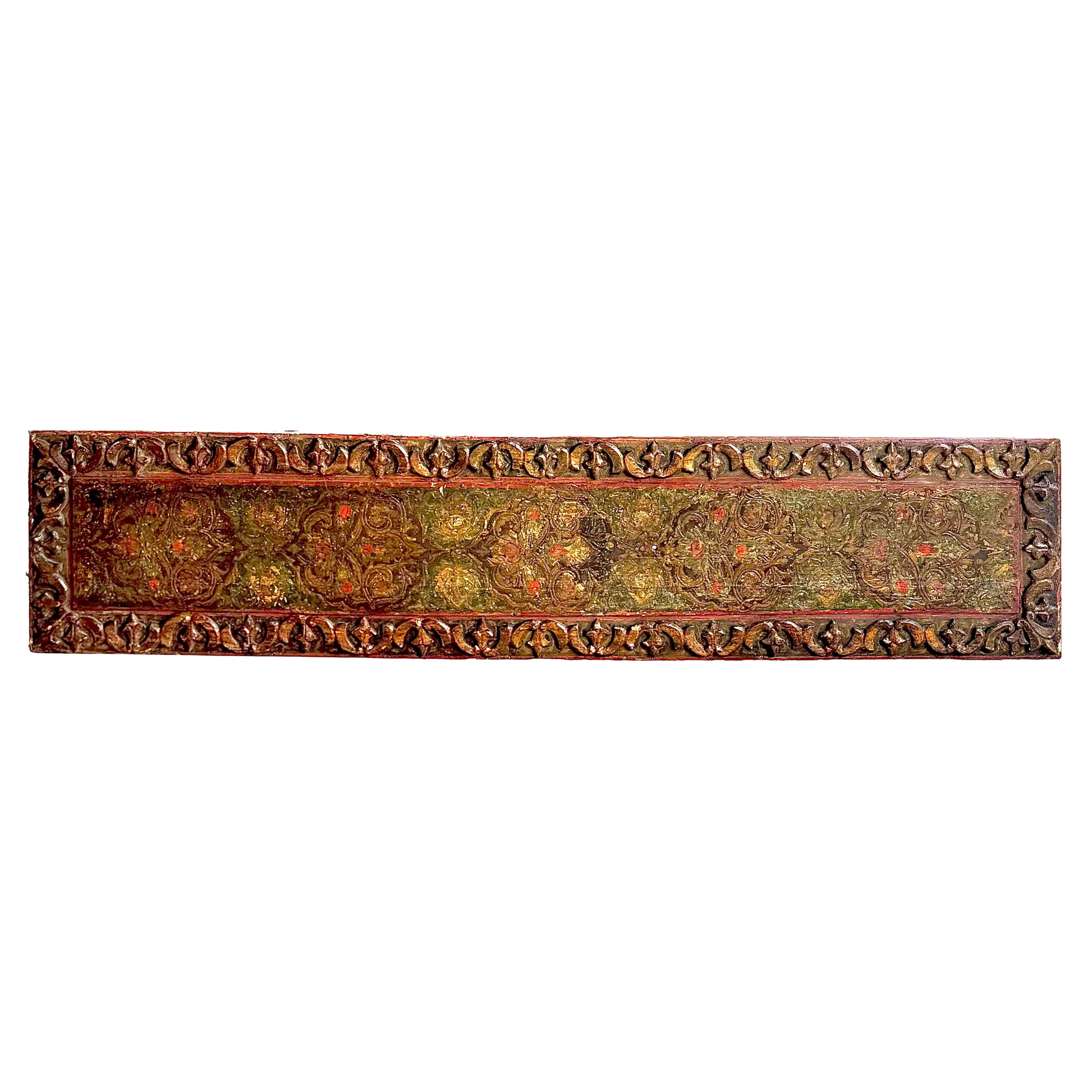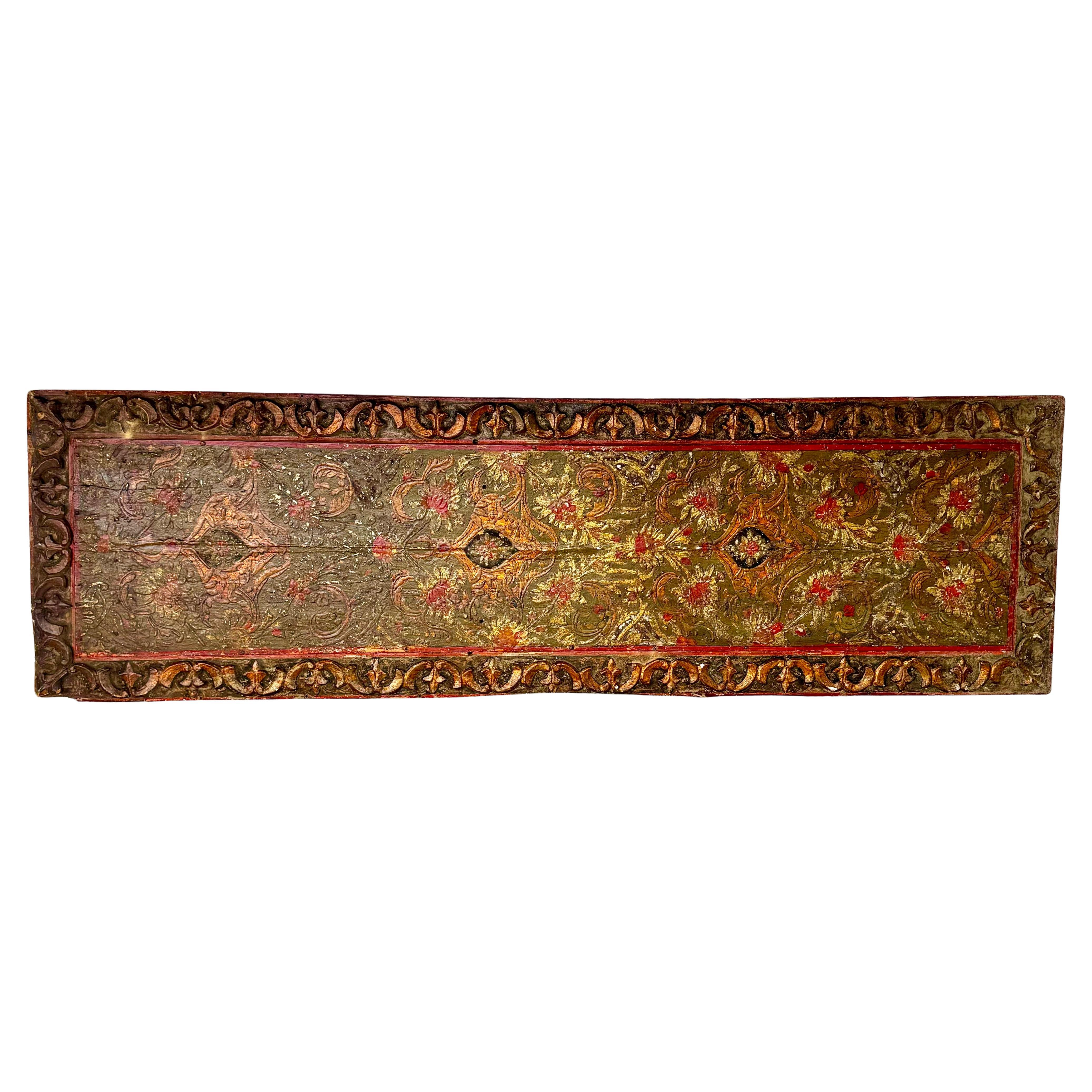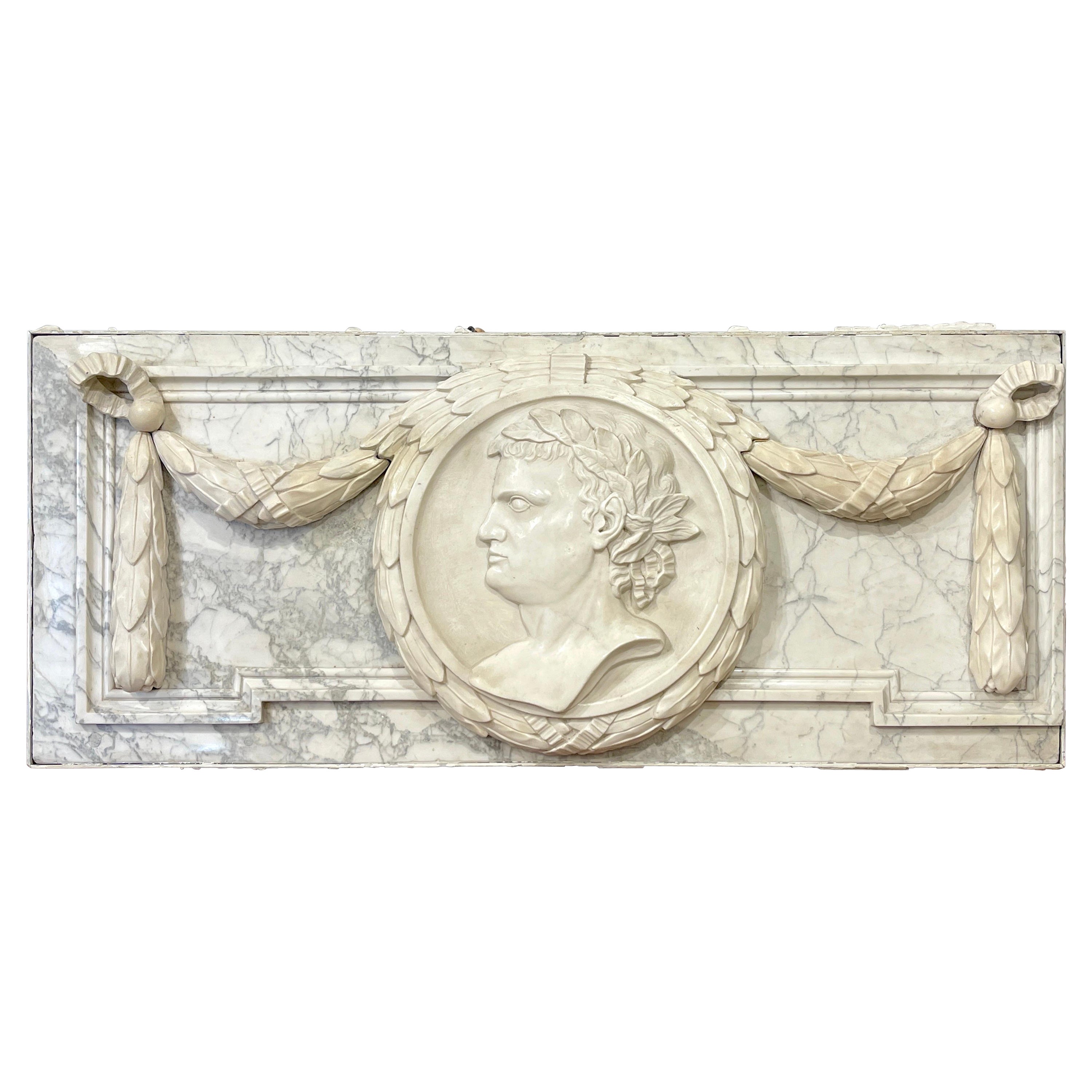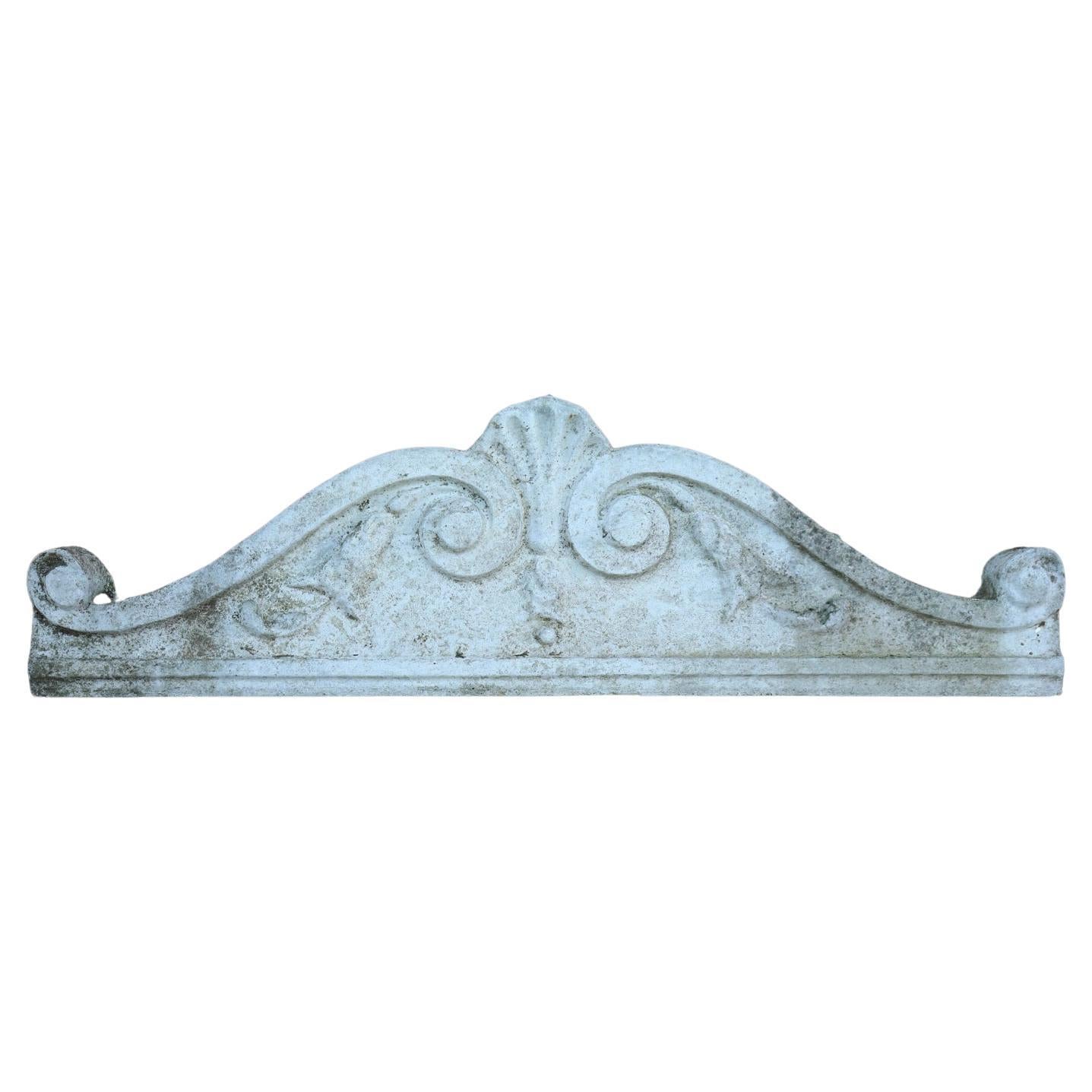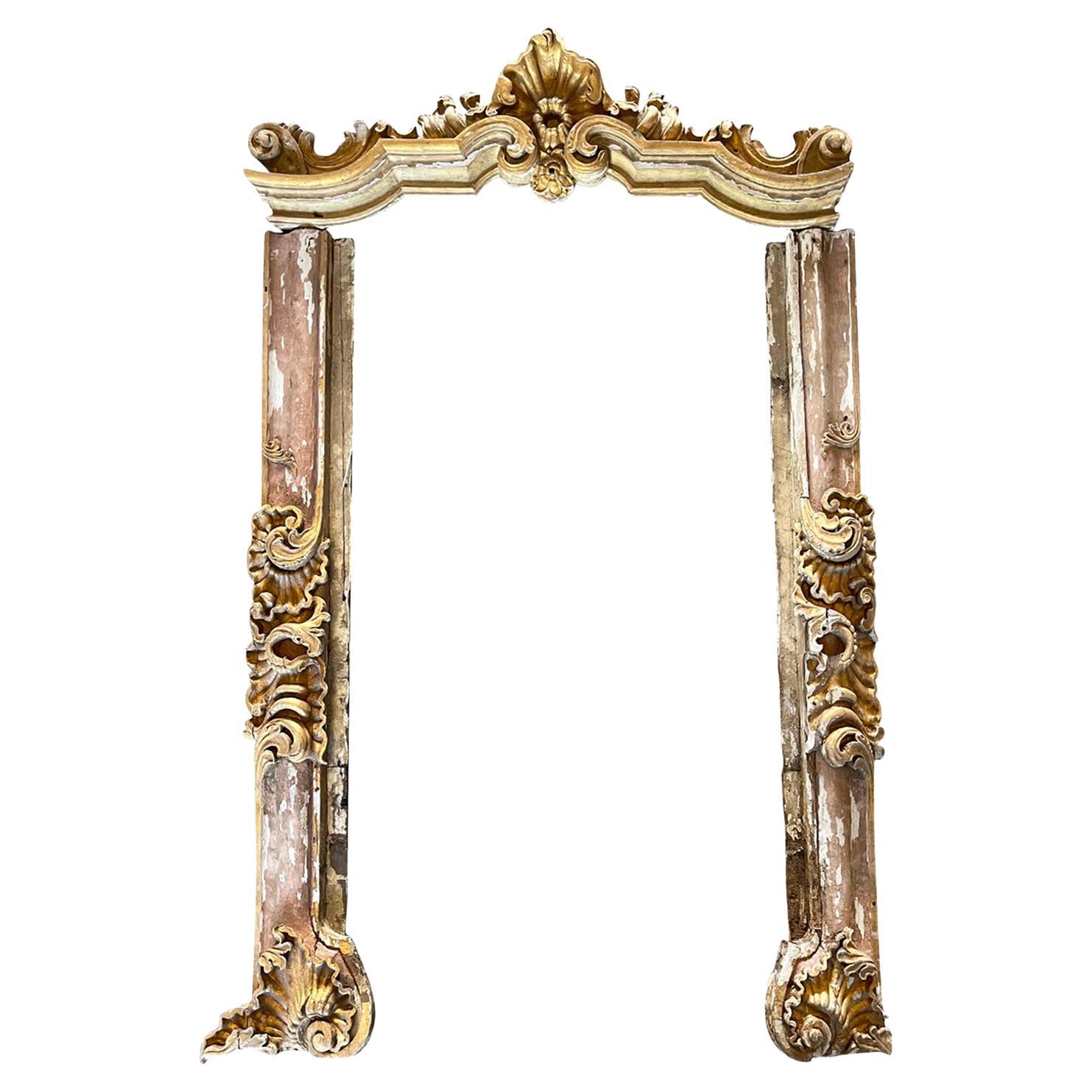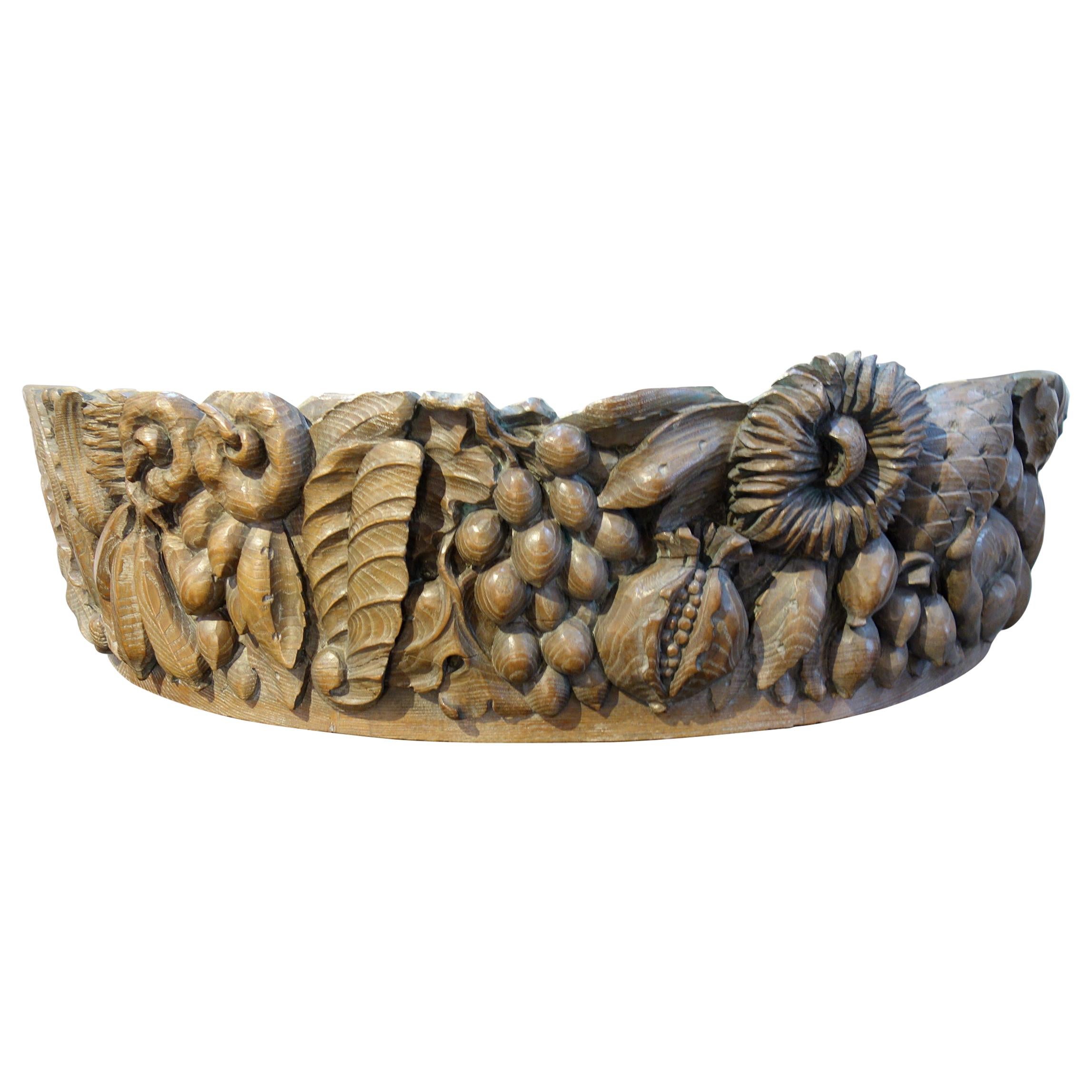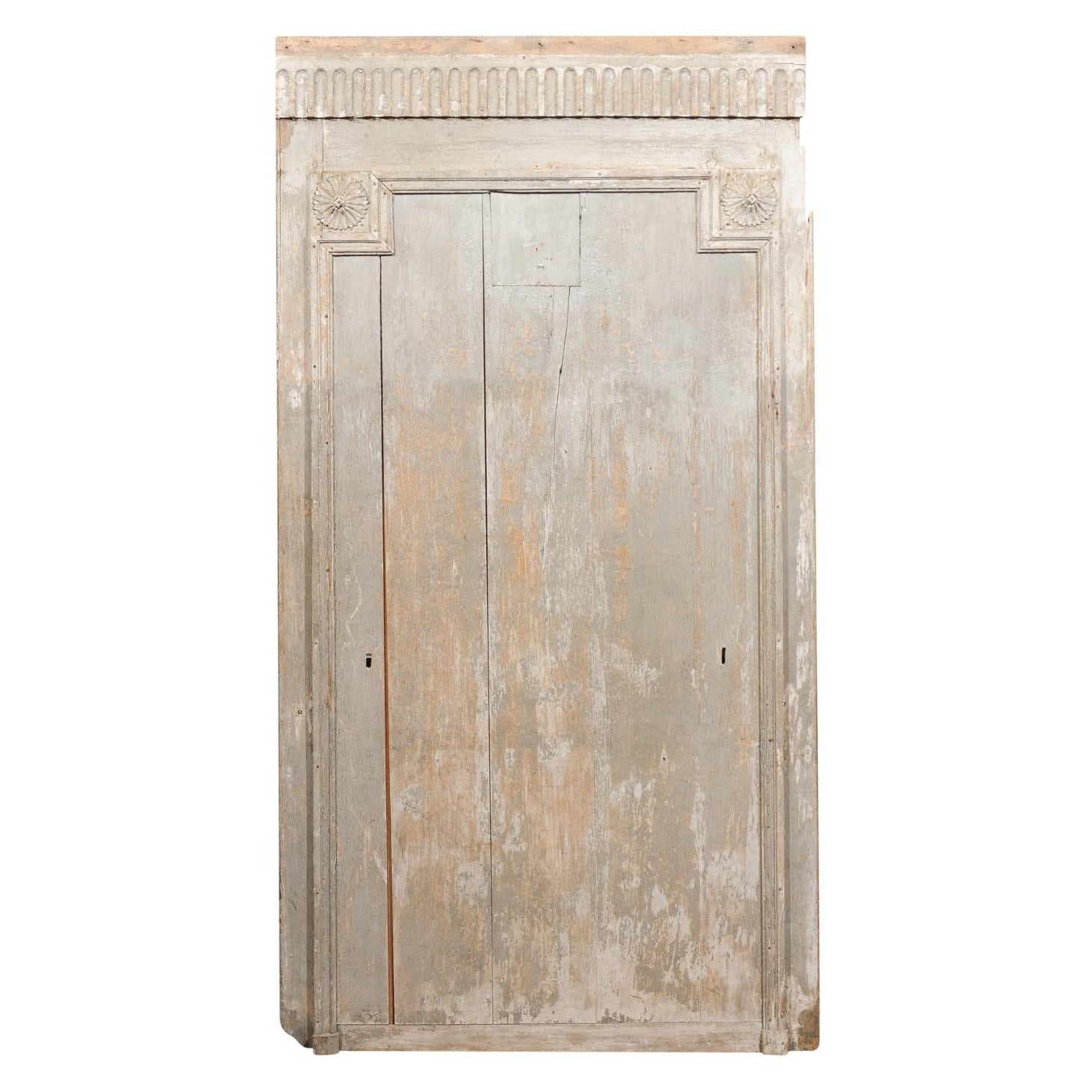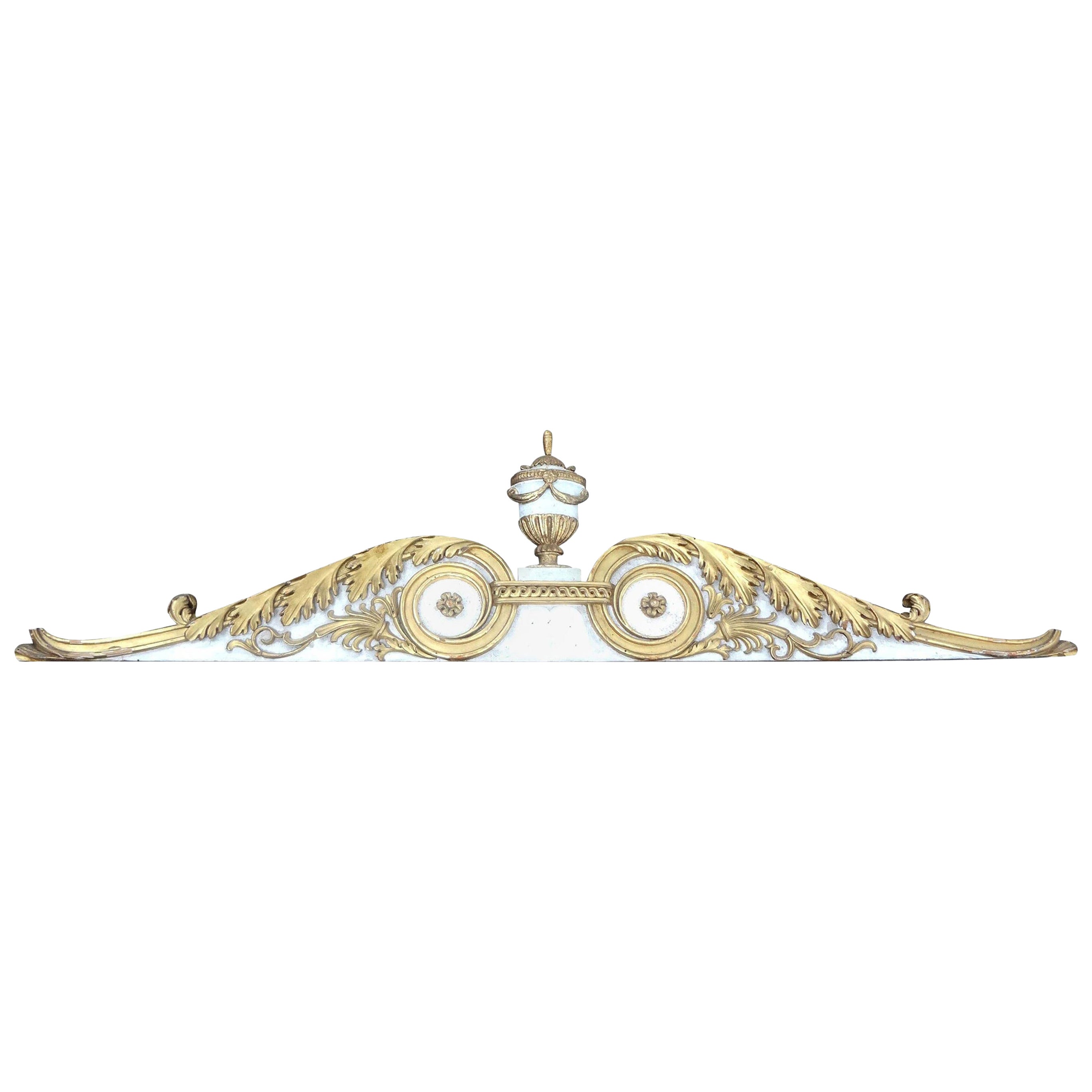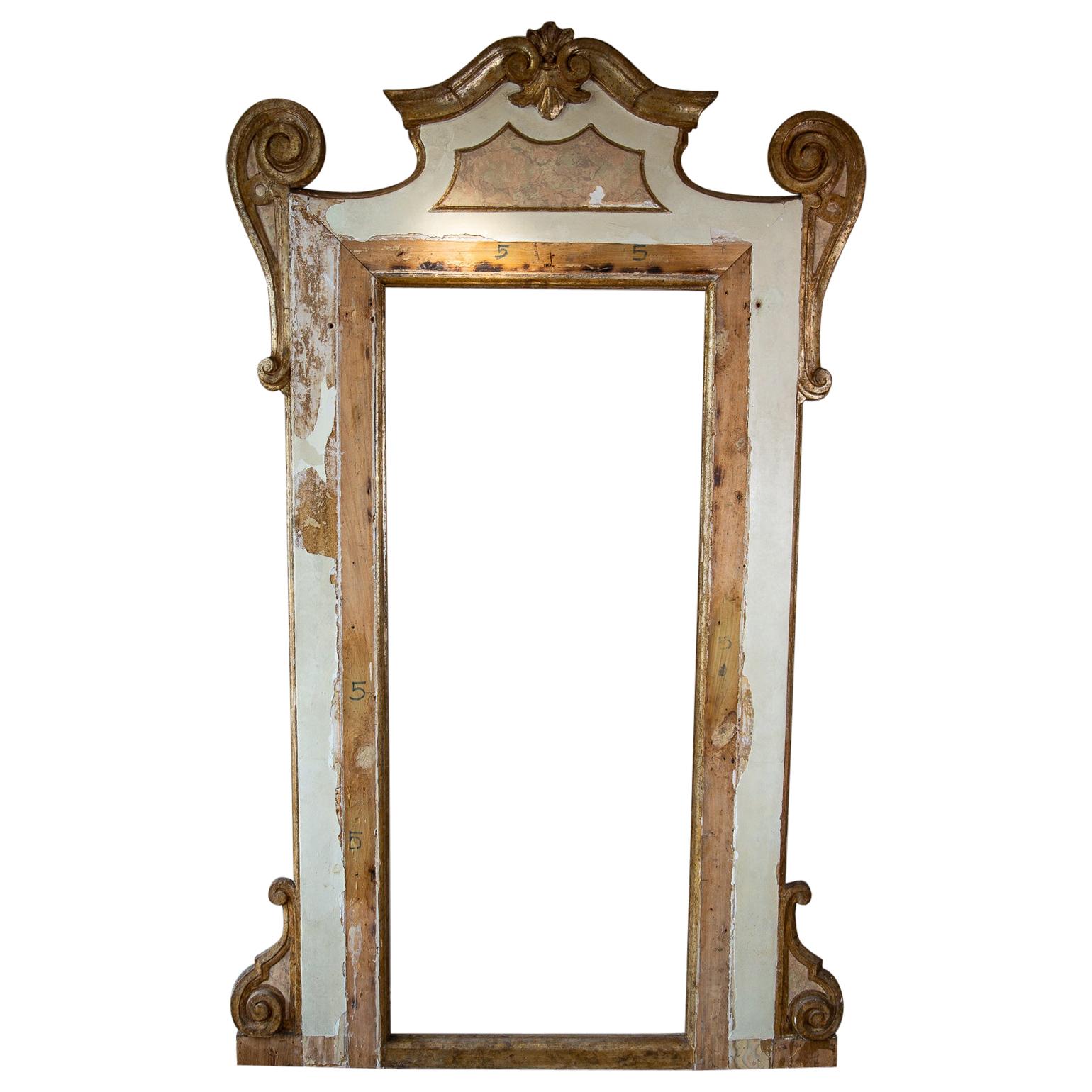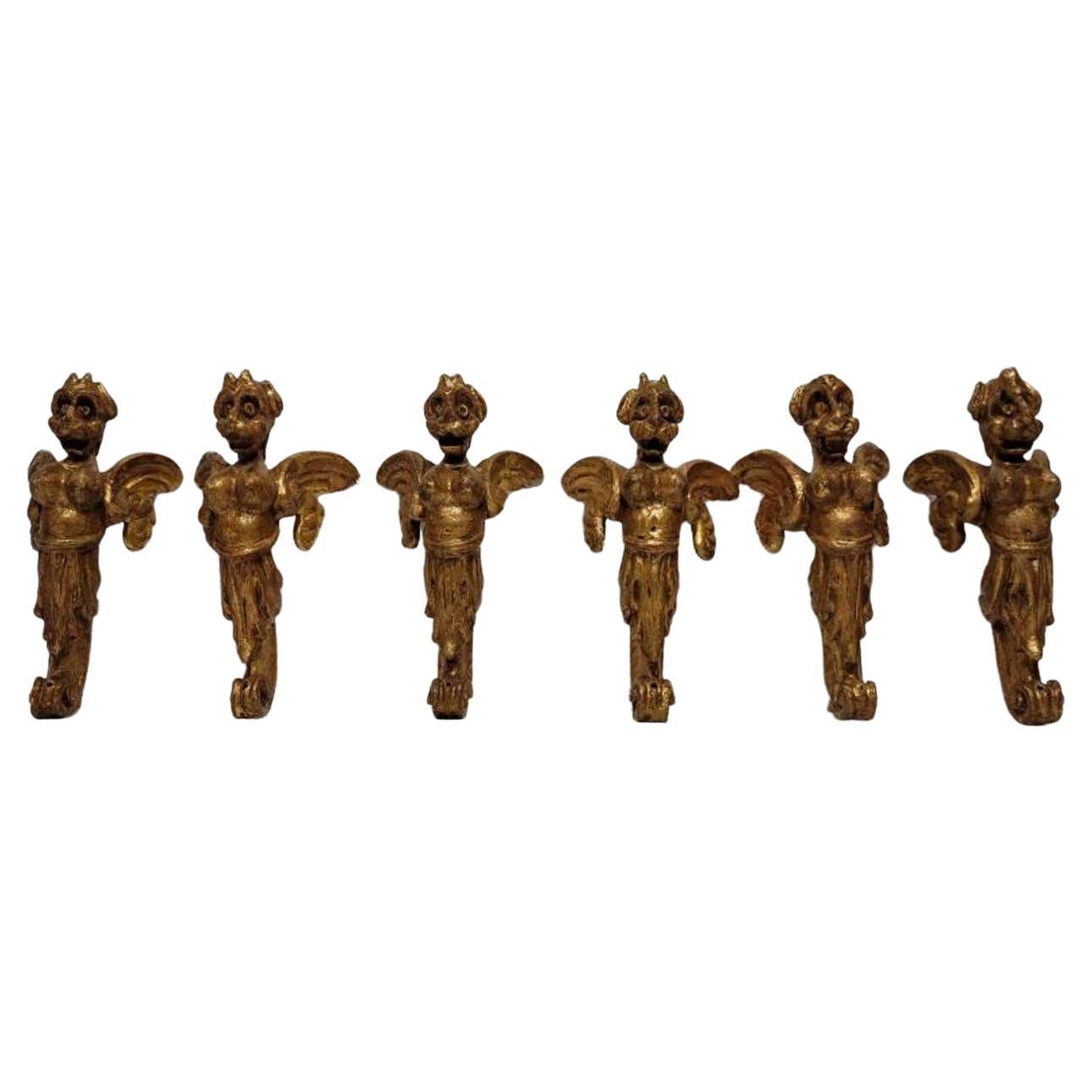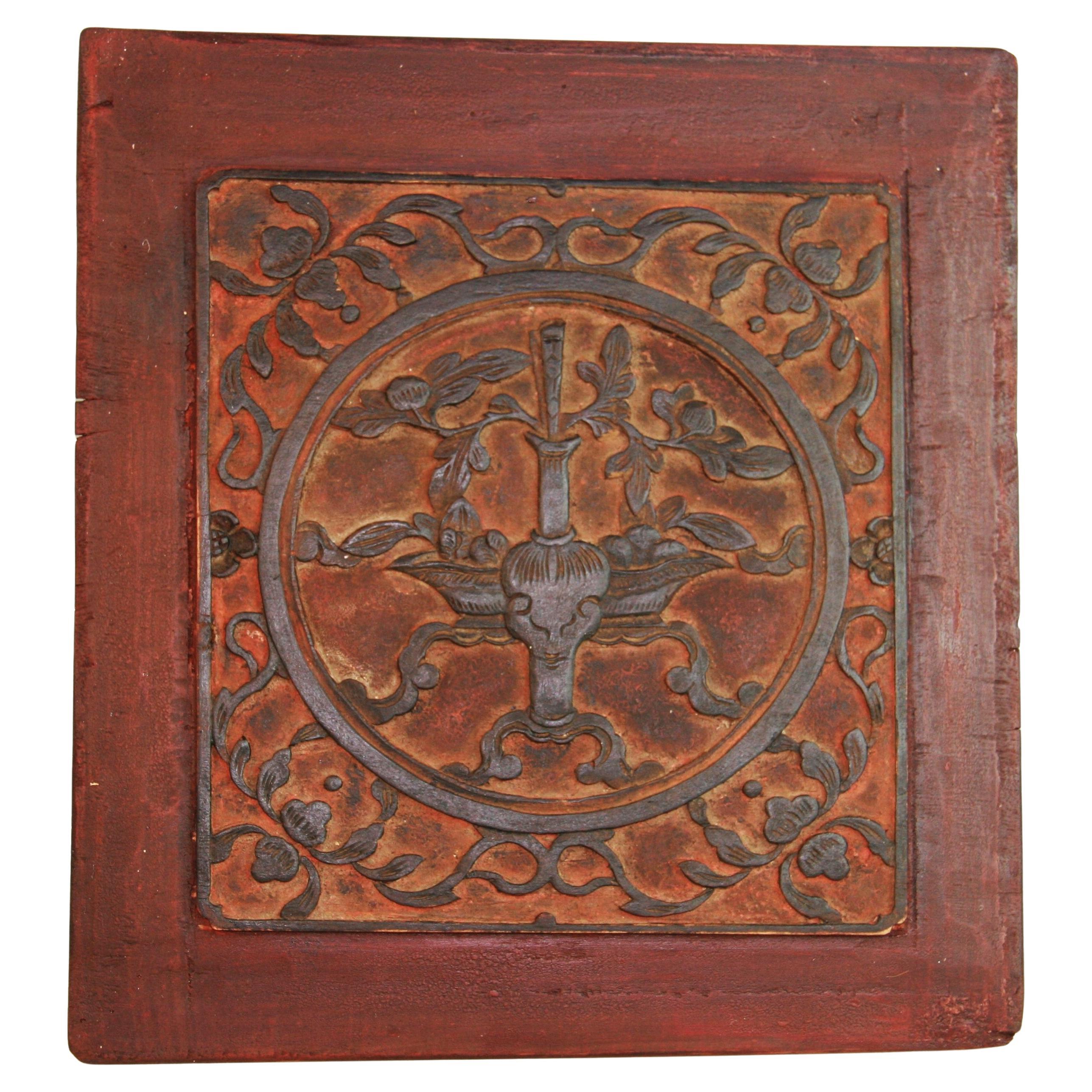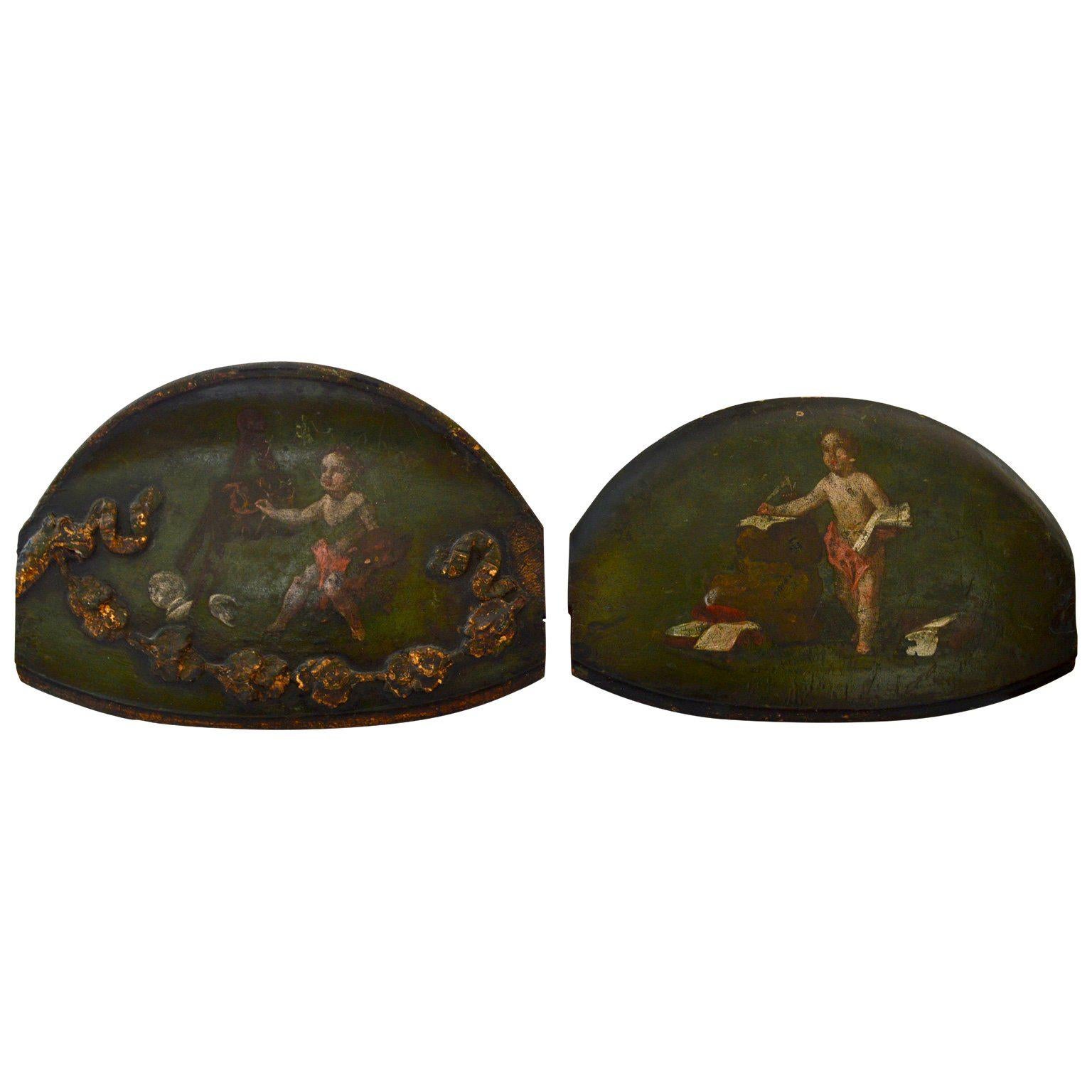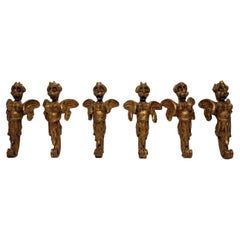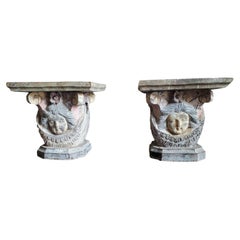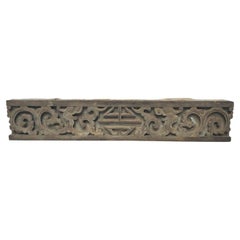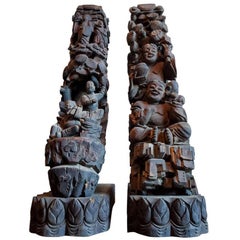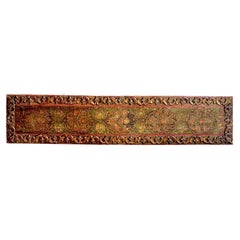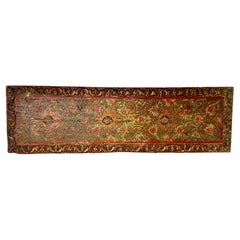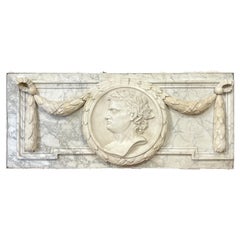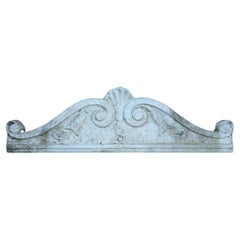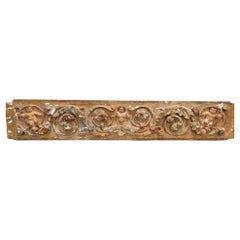
18th/19th Century Italian Baroque Architectural Frieze Panel
View Similar Items
Want more images or videos?
Request additional images or videos from the seller
1 of 12
18th/19th Century Italian Baroque Architectural Frieze Panel
About the Item
- Dimensions:Height: 8 in (20.32 cm)Width: 45.25 in (114.94 cm)Depth: 2 in (5.08 cm)
- Style:Baroque (In the Style Of)
- Materials and Techniques:
- Place of Origin:
- Period:
- Date of Manufacture:circa 1800s
- Condition:Wear consistent with age and use. Minor losses. Minor fading. Please see description.
- Seller Location:Forney, TX
- Reference Number:1stDibs: LU5977230921552
About the Seller
4.8
Platinum Seller
Premium sellers with a 4.7+ rating and 24-hour response times
Established in 2013
1stDibs seller since 2021
281 sales on 1stDibs
Typical response time: 1 hour
Authenticity Guarantee
In the unlikely event there’s an issue with an item’s authenticity, contact us within 1 year for a full refund. DetailsMoney-Back Guarantee
If your item is not as described, is damaged in transit, or does not arrive, contact us within 7 days for a full refund. Details24-Hour Cancellation
You have a 24-hour grace period in which to reconsider your purchase, with no questions asked.Vetted Professional Sellers
Our world-class sellers must adhere to strict standards for service and quality, maintaining the integrity of our listings.Price-Match Guarantee
If you find that a seller listed the same item for a lower price elsewhere, we’ll match it.Trusted Global Delivery
Our best-in-class carrier network provides specialized shipping options worldwide, including custom delivery.More From This Seller
View All18th Century European Baroque Period Dragon Architectural Elements, Set of Six
Located in Forney, TX
An antique Baroque period European Medieval style six piece collection of rare and most unusual hand carved giltwood architectural elements with beautiful rich patina. circa 1700s
...
Category
Antique 18th Century European Baroque Architectural Elements
Materials
Giltwood, Paint
19th Century Baroque Carved Polychromed Architectural Column Capital Table Pair
Located in Forney, TX
An early 19th century pair of Baroque hand carved and painted wooden architectural salvaged exterior building elements, now repurposed and fashioned for use as one-of-a-kind pedestal tables.
Intricately detailed, whimsical sulptural design, executed in classical corinthian column capital form, having spiral scroll volutes, acanthus leaf carvings, figural ancient mask...
Category
Antique 19th Century Folk Art Architectural Elements
Materials
Wood
Antique Asian Architectural Relief Carved Stone Frieze Panel
Located in Forney, TX
An exceptional architectural high relief hand carved stone band of running scroll decoration frieze panel, with beautiful scrollwork, representing wind or water, and mythological creature, perhaps a dragon or grotesque griffin. The characters in the center may be Asian hieroglyphs (Japanese kanji). The top side has a dovetail joinery cutout from where it would have attached and fit into place before cementing it in place. 19th century or earlier.
This antique architectural salvage building element is a beautiful and artful display of history, and a quick way to add texture, character, rustic charm and interest. Will make a wonderful decorative object within your home or office.
Provenance:
Personal property of Genshiro Kawamoto. A Japanese real estate billionaire and avid art collector who owned numerous multi-million dollar properties in Hawaii and was building one of the most expensive homes in Hawaii prior to his tax evasion arrest, followed by prison sentence in Japan. He had bought multiple properties to convert into museums in order to display his personal decorative arts collection, but due to his legal and financial problems, his items were all auctioned...
Category
Antique 19th Century Asian Architectural Elements
Materials
Stone
19th Century Chinese Temple Architectural Corbel Carved Sculpture Pair
Located in Forney, TX
A majestic pair of antique architectural salvaged Chinese temple corbels, now mounted as one-of-a-kind wooden sculptures on custom floor standing display pedestal stands.
Originally commissioned for an important religious temple in China, the impressive large scale wall bracket corbels were notoriously difficult as they had to serve as both highly decorative temple ornaments and structural building elements used to support the weight of a wall.
Hand-crafted in the early 19th century, smilarly styled design, each exceptionally hand carved, sculpted, and painted by highly trained artisans. Profusely carved and decorated, featuring very fine quality high relief work throughout, extensive bas relief, pierced openwork, rich carvings and intricate incised detailing, depicting various Chinese folk religion figures and imagery.
Rising on bespoke handmade stands, consistenting of sturdy rectangular shaped thick plank plinth base embellished with foliate carvings, held upright by turned column single support.
Rich in culture and history, interesting, unusual, highly decorative, whimsical and artistic, sure to add sophisticated elegance, rustic character, color, space, texture and lots of visual interest.
Dimensions, largest (approx):
Each: 32.5" H, 19" W, 7.25" D.
Please note, the objects were sourced and transported both legally and ethically, retaining partial original red wax export seal to top.
Display the three Sanxing, in their iconic representation as three, old, bearded, wise men, which dates back to the Ming dynasty, when the Gods of the three stars were represented in human form for the first time. One panel having two monumental smiling figures with hand painted eyes and tongue, the other fragment depicting four figures, seated and standing, likely Immortals, Gods, Shen deity, and other characters from ancient Chinese mythology and folklore. Both pieces with elaborate lotus and pine tree motif, a powerful symbol of wisdom and longevity.
Sanxing figures are an important part of Asian culture. Statues of these three Gods...
Category
Antique 19th Century Chinese Chinese Export Architectural Elements
Materials
Wood, Paint
18th/19th Century Italian Baroque Silvered Metal Altar Monstrance Reliquary
Located in Forney, TX
A stunning antique Italian Baroque style silvered metal gilded wood monstrance reliquary. circa 1770-1820
Handmade in Italy in the late 18th / early 19th century, commissioned by the church to display an important religious relic, sculptural painted wood form, mounted with decorative silver repousse metal facing, open oval window where the philatory relic was once housed, rising on a gold gilt painted shaped plinth base.
Dimensions: (approx)
17" High, 8" Wide, 5" Deep, 1.25lbs
History:
Reliquaries (also referred to as a shrine or châsse in French), are containers used to protect and display relics. A portable reliquary may be called a fereter, and a chapel in which it is housed a feretory. A monstrance, also known as an ostensorium (or an ostensory), is a vessel used in Roman Catholic, Old Catholic, High Church Lutheran and Anglican churches for the display on an altar of some object of piety, such as the consecrated Eucharistic host during Eucharistic adoration or Benediction of the Blessed Sacrament. It is also used as reliquary for the public display of relics of some saints.
The use of reliquaries became an important part of Christian practices from at least the 4th century, initially in the Eastern Churches, which adopted the practice of moving and dividing the bodies of saints much earlier than the West, probably in part because the new capital of Constantinople, unlike Rome, lacked buried saints. Relics are venerated in the Oriental Orthodox, Eastern Orthodox, Roman Catholic and some Anglican Churches. Reliquaries provide a means of protecting and displaying relics. While frequently taking the form of caskets, they range in size from simple pendants or rings to very elaborate ossuaries.
The relics were enshrined in containers crafted of or covered with gold, silver, gems, and enamel. These objects constituted a important form of artistic production across Europe and Byzantium throughout the Middle Ages.
Many were designed with portability in mind, often being exhibited in public or carried in procession on the saint's feast day or on other holy days. Pilgrimages often centered on the veneration of relics. The faithful often venerate relics by bowing before the reliquary or kissing it; those churches which observe the veneration of relics distinguish between the honor given to the saints and the worship that is due to God alone.
Sixteenth-century reformers such as Martin Luther opposed the use of relics since many had no proof of historical authenticity and objected to a cult of saints. Many reliquaries, particularly in northern Europe, were destroyed by Calvinists or Calvinist sympathizers during the Reformation...
Category
Antique Early 19th Century Italian Baroque Sculptures and Carvings
Materials
Metal
19th c. Chicago Stock Exchange Building Molding Fragment Architectural Element
Located in Forney, TX
A rare and important hand painted plaster decorative molding fragment, by Louis H. Sullivan (American, 1856-1924), from the interior of the Chicago Stock Exchange, circa 1893-1894.
...
Category
Antique 19th Century American Industrial Architectural Elements
Materials
Plaster, Paint
You May Also Like
18th Century Italian Frieze Painted Wall Panel #2
Located in Bradenton, FL
18th century Italian wall decorative panel frieze with stunning hand-carved gilded relief. The decorative candelabra gilt relief motif is very classical, hand-carved with alternating...
Category
Antique 18th Century Italian Renaissance Architectural Elements
Materials
Wood
18th Century Italian Frieze Carved Painted Wall Panel #1
Located in Bradenton, FL
18th century Italian wall decorative panel frieze with stunning hand-carved gilded relief. The decorative gilt relief motif is very classical, hand-carved with alternating love knots...
Category
Antique 18th Century Italian Renaissance Architectural Elements
Materials
Wood
19th Century Italian Carved Marble Architectural Frieze Sculpture of Caesar
Located in West Palm Beach, FL
19th Century Italian carved marble Architectural Frieze Sculpture of Caesar, Of rectangular form the finely carved Carrera Marble 50" x 20" slab w...
Category
Antique Late 19th Century Italian Classical Roman Architectural Elements
Materials
Carrara Marble, Statuary Marble, Steel
$14,213 Sale Price
24% Off
Early 20th Century Italian Baroque Style Large Frieze
Located in Casale Monferrato, IT
Beautiful refined baroque style outdoor architectural frieze, circa 1920s in cement. Beautiful baroque revival with curls, swirls and a large central shell. This type of architectura...
Category
Vintage 1920s Italian Baroque Architectural Elements
Materials
Cement
17th - 18th Century Portuguese Antique Architectural Pinewood Baroque Surround
Located in West Palm Beach, FL
An antique Portuguese Baroque architectural wall frame made of partly gilded Pinewood, in good condition. The tall, surround is particularized by ...
Category
Antique Late 17th Century Portuguese Baroque Architectural Elements
Materials
Pine, Giltwood
Italian Baroque Style Carved Capital Frieze Architectural Element, circa 1840
Located in Encinitas, CA
19th century Italian Baroque style ornately solid carved capital frieze element with florals & foliage. Arc-shaped old chestnut with highly developed bronze-like patina from aging. R...
Category
Antique Mid-19th Century Italian Baroque Architectural Elements
Materials
Chestnut
$1,760 Sale Price
20% Off
